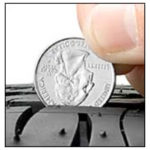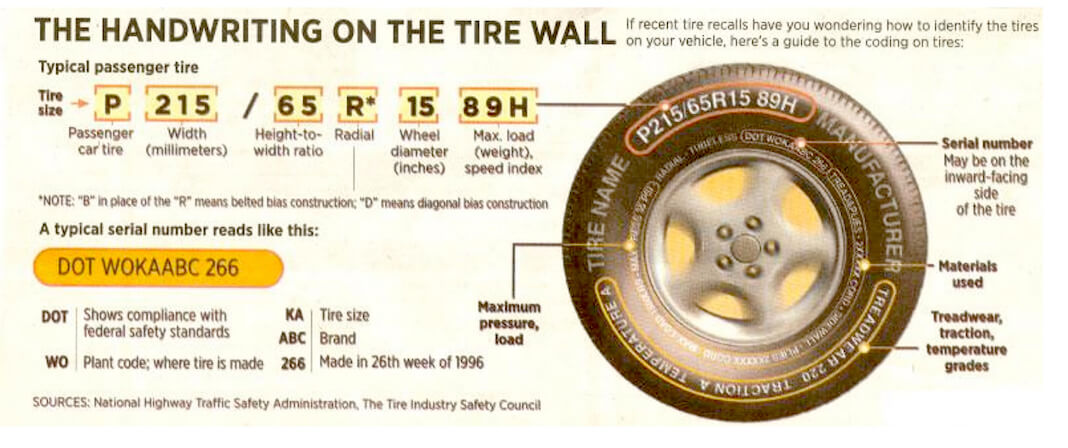 By Jim Wright
By Jim Wright
Texas Border Business
When your vehicle hits the road, there’s a lot riding on the tires! The public roadways are getting more and more crowded, which probably makes traveling to and from job sites the riskiest activity in the course of a project. Additionally, drivers are being held criminally and civilly liable when they are involved in vehicle accidents. “Where the rubber hits the road” is the starting point for ensuring vehicle safety.
When Do I Replace My Tires?
All tires have wear indicators. These lateral cords are molded into the tire at a specific depth. When you see the tread wear indicator, it’s time to replace the tire.
 Rule of Thumb – If you can stick a quarter into the grooves of your tire tread and any part of Washington’s head is covered, your tires need to be replaced. The tread is dangerously thin.
Rule of Thumb – If you can stick a quarter into the grooves of your tire tread and any part of Washington’s head is covered, your tires need to be replaced. The tread is dangerously thin.
Many tire manufacturers are now recommending a tire replacement schedule of 3–7 years. Consult your tire manufacturer’s website for recommended ‘time based’ replacement schedules.
Selecting the Right Tire
Whether for a pick-up or a crane carrier, every tire is different. Selecting the right tire for vehicles and trailers is the starting point for safe travel. Based on your area of the country and how you drive, your vehicle might need Highway, Off-Road, All-Season, Snow Tread, or Performance tires.
The graphic below explains the standardized coding and marking system for all tires sold in the United States.

Tire Maintenance
Inspections – Any scuffs or cuts in the tires’ sidewalls deserve a closer look. What appears to be a small cut in a fully inflated tire can become a large cut in the flexing sidewall of an under inflated tire.
Air Pressure – Proper inflation has been recognized as the key element in tire life and performance. The National Highway Traffic Safety Administration (NHTSA) cites under-inflation as the leading cause of tire failure. Check your tire inflation every day as part of a pre-trip inspection. Do not rely on visual inspections to determine tire pressure.
Tire Repair – Tires should only be repaired by certified technicians. Not all tire damage can be repaired. External plugs are not allowed and sidewall damage requires tire replacement.
Overloading – Overloading is another leading cause of tire failure. Check the maximum load rating of the tire and rim before installation. This load is often substantially less than the vehicle can actually carry. NEVER overload the tire since this will result in structural failure to the sidewall and / or tread.
Tire Care Glossary
Balancing – Balancing ensures that tires and wheels spin with their weight equally distributed. Unbalanced tires can result in shimmying (back and forth) and tramping (up and down) movements. Have tires checked at least once a year to be sure they are properly balanced.
Alignment – Alignment ensures the wheels are aiming in the right direction and are lined up properly with one another. If all four wheels aren’t lined up in precisely the same direction you’ll get excessive wear on the misaligned tires’ tread. Misalignment also affects handling and fuel economy.
Rotation – Tires should be rotated every 6,000 to 8,000 miles to get more uniform tread wear on each tire. This may extend the life of the tread by 20%. Your mechanic (or your owner’s manual) will know in what order to rotate your tires.
Conclusion
Don’t let a $30 shortcut on a $100 tire cost you your vehicle! When a truck rolls over the accident is spectacular, frequently fatal, and always horribly expensive. Some simple, inexpensive maintenance steps and homework before tire purchases can help ensure your tires safely get you everywhere you need to go. NHTSA Tire Safety Brochure – free download















